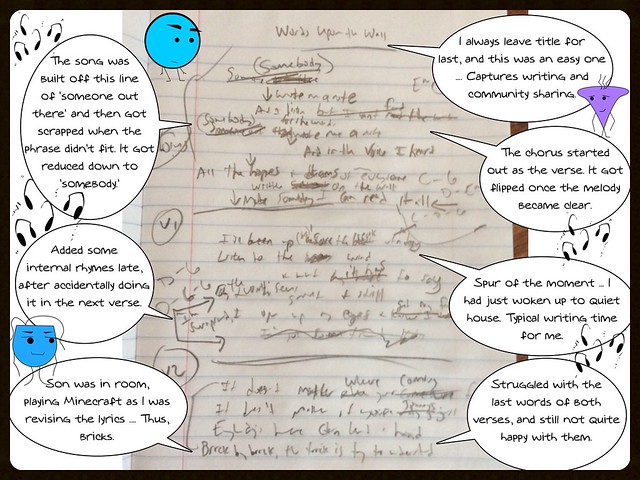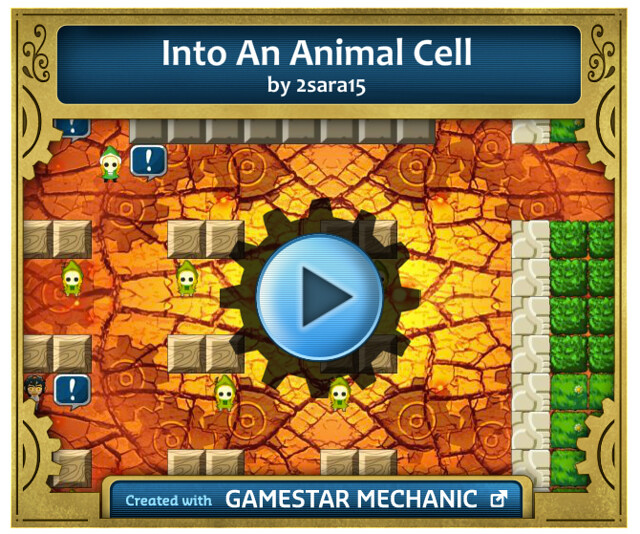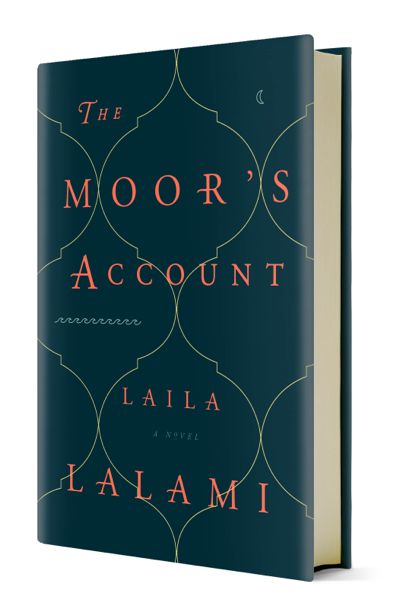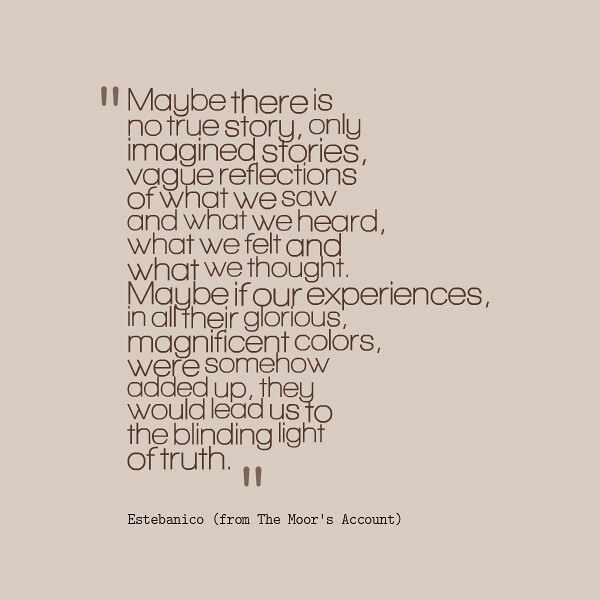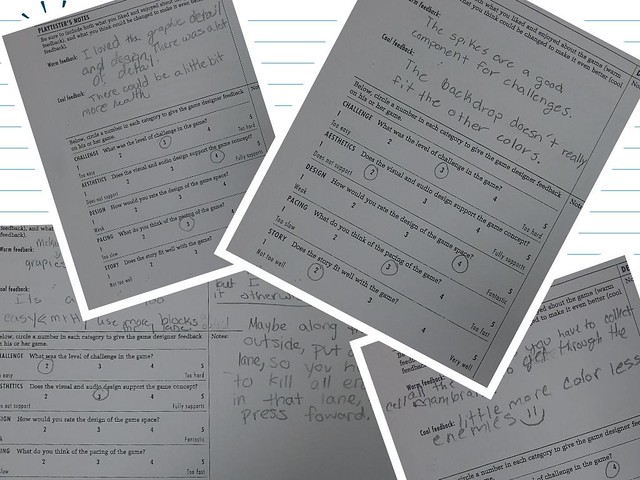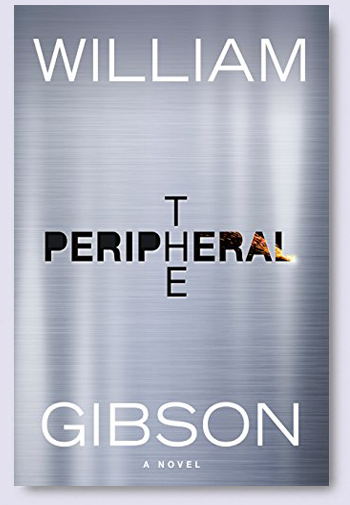(This is a Slice of Life, a regular writing activity facilitated by Two Writing Teachers. Come write with us.)
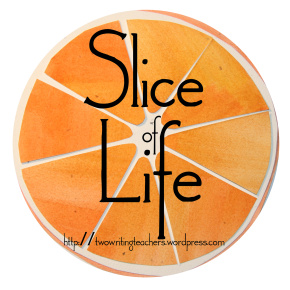
I’ve often harped on and on against using the dichotomy of the digital natives versus the digital immigrants. It’s a false dichotomy to say that young people “get” technology and adults don’t. All of us are in the middle, depending on the situation and context and technology. And yet, every now and then, a student will do something that has me scratching my head, discovering some workaround they figured out that I would not have thought about.
This one from yesterday had me scratching my head, and also giggling out loud.
A little pretext: my students are working on a persuasive piece of writing in which they review a video game. It was due yesterday, and one of my students was on a family weekend ski trip, so she worked on her paragraph in the car on the way North. Apparently, all she had was an iPod, so she found one of the Art/Drawing Apps, and used the text feature to write her paragraph that way (Can you get that picture in your mind? This kid in the cramped back seat of the family car, huddled over an iPod, tap-typing in a program designed for drawing?)
She could not figure out how to print it out, so her mother emailed me the file and asked that I print it out, which I had gladly do if necessary. But when I opened up the file, this is what I saw:

Yes, tiny tiny type. If anything, my screenshot does not do justice to how small those words really are. So small, in fact, that when I held it in my hands, it was like looking at a collection of ants on the page. (Granted, I have old eyes … digital immigrant eyes?) It reminded me of that famous scene in Spinal Tap, with the tiny Stonehenge on stage. You know what I’m talking about, right?
‘This Is Spinal Tap’ – ‘Stonehenge’ from filmc3ption on Vimeo.
Anyway, the student and I were both amused at the paper I printed out. She even declared, “I can read it just fine, Mr. H,” and then bent down, eyes very close to the paper, and started to read it to me …. before bursting out laughing.
Last night, they tried a few ways to get the text bigger but of course, the app converted the text into the drawing itself, making the text un-editable, so it is final. In the end, they took a screenshot of the writing and sent that to me, and that’s just fine.
Peace (in the tiny tiny writing),
Kevin
